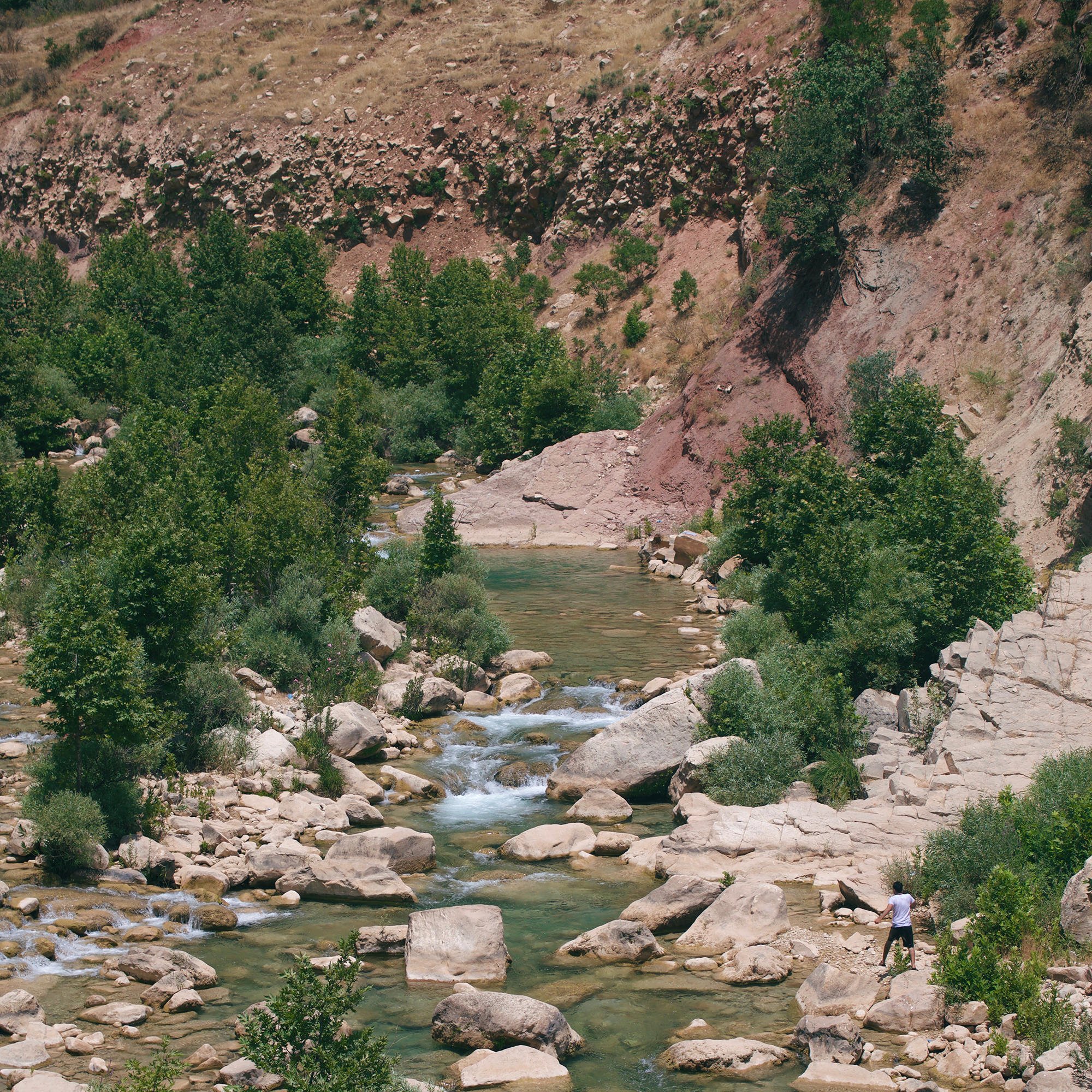After the Flood
The water in Nigeria has now dried up, but its effects have not evaporated with it.
JULY 4, 2023
The flood was catastrophic. It began in May 2022 and ended in October 2022. About 1.4 million people were displaced from their homes and lost their livelihoods as a result, and about 500,000 hectares of farmland were washed away. Over 600 people died. A food crisis loomed, and alongside it came the intensification of poverty, especially among rural farmers. The flood collapsed buildings, destroyed roads and equipment, stopped children from going to school, heavily diminished people’s access to medication and food, disrupted the lives of people, separated families, and killed hundreds of their loved ones. Some who lost their dead could not bury them.
The “hundreds of thousands” of individuals affected are real people, with real losses. My Aunty Doris lost her farm crops for the entire season. She lives at Ossissa, a farming community in the northern part of Nigeria’s Delta State. She and her husband grow cassava, vegetables, and sugar cane on their farm. When the flood came, it washed away their land, along with the income and fulfillment that would have come from their harvest. “We lost everything, Anwuli nwa m,” she told me when we spoke over the phone in November. “The flood came and it destroyed everything. It removed all our crops, our cassava, even our pepper and our sugar cane. Everything in our farm has gone. It affected our entire village. Next year it will be very hard to eat.” Her voice was gentle, but you could tell it carried great pain. I was unsure of what to say to her. It was the same for my grandmother: the flood forced her to leave her village at Odekpe in Anambra, and she has remained away, heartbroken for her inability to rescue some of the belongings she owned with her late husband, Papa Nnuku m.
I am a historian, currently in Nigeria for field work, collecting data from the archives, carrying out oral interviews and living among the people in villages of the West Niger Igbo Area. My research examines the experiences and meanings of lack, inequality, and poverty, and how these meanings have evolved over a hundred years within a predominantly rural subregion of Southern Nigeria. I examine ideas of monetary and non-monetary poverty; historical structures of support for the poor; the relationship between the environment, income and survival for rural farmers; the evolution of structural and generational poverty as well as pathways for escaping it; and the historical relationship between urban and rural poverty. I have come to appreciate how the slightest changes can affect economic stability. Events like floods can redefine the trajectory and lived realities of communities in more ways than we can imagine.
The last major flood occurred in 2012. It killed over 350 people and displaced about two million people. The country lost an estimated 2.6 trillion Naira ($5,646,295,200) to the flood that year, according to Nigeria’s National Emergency Management Agency (NEMA).
A decade later, similar causes brought a new flood, and new losses. It began with unusual heavy rainfall, coupled with the full wrath of climate change. The crisis was further exacerbated by political miscommunication about the opening of the Lagdo Dam in Cameroon, on September 13, 2022. In 2016, Nigeria signed an agreement with Cameroon, stating that that Cameroon would notify Nigeria whenever it planned to open its Lagdo Dam, which is located to the east of Nigeria and affects its lands. Excess water released from the dam in Cameroon flows into villages in the Nigerian states of Adamawa, Borno and Taraba. But Cameroonian authorities opened the gates to Lagdo Dam without notifying Nigeria, according to Clement Nze, Director-General of Nigeria Hydrological Services Agency, The gate stayed open until mid-October. Water flowed to Kogi, where the Niger and Benue rivers meet, and then further down to the Southern Nigerian states of Anambra, Bayelsa, Delta, Edo, Rivers, among others. People faced heavy rainfall while also contending with stampeding water running down from the dam.
The Nigerian Government failed to take pre-emptive action to minimize flooding and alleviate its effects, beyond the mere issuance of a flood warning. Everyone knew that 2022 would be a year of heavy rainfall. But when the water came, the government was unprepared to mitigate its catastrophic effects, or protect people from the resulting havoc. The federal and state governments blamed each other for the calamity that followed.
About 90 million Nigerians are poor, unable to afford basic needs of life. Many of them have been submerged in the ravaging effects of the flood. Small-scale rural farmers lost their crops and harvests, and therefore most (if not all) of their income and food in the following year. Their survival after the flood has been tough, for these are families who have long had to live from hand to mouth even in normal conditions. Some children have remained out of school for an entire academic year. Some have joined the labor force to help their families meet basic survival needs.
Many families have run into debt, and greater pressure and dependence will come on the income of kin and friends who were not as affected by the flood. With the flood also came a greater likelihood of outbreaks of water-borne diseases like cholera, typhoid fever, and malaria, and not everyone will be able to afford proper treatment.
What happens after the flood? What does survival look like?
Having lived through the floods, I have become afraid. I am afraid for the thousands of people whose lives are now altered, and whose communities are most affected. We must ask ourselves what we should do to ensure that this does not happen again. A decade from now, will things be different? What happens after the flood? What does survival look like? Could another major flood be avoided, and should another come, will the right structures and preparations be present? Have we fully understood that in the face of climate-caused emergencies, poorer nations and their residents will be the most unfortunate and vulnerable of all? For the victims and survivors of this flood, will the opportunities for survival and starting again be the same and equal between them? For whom might the prospects be the most difficult, how might succor be given to them, and from whom shall this help come?
The water has now dried up, but its effects have not evaporated. Some form of relief has been offered by government agencies, and much from both private and international organizations and humanitarian partners. The relief has included food, building materials, health and sanitation care, educational materials, and for some, grains to begin their farming seasons anew. UNICEF supported about 165 temporary learning centers in 27 communities, serving a total of 6,000 children in affected communities in Jigawa, for example. USAID gave $1 million to provide relief to those affected. The United Nations donated $10 million to the Nigerian Humanitarian Fund (NHF) and the Central Emergency Response Fund (CERF) to support those whose lives were ravaged by the flood, as well as those who live in the North-East of Nigeria and who face the damaging effects of prevailing insurgence.
My Aunty Doris did not receive any support from the government. When I called her some months after the flood in April, and asked if the Government had visited, she said, “Anwuli nwa m, government di poor, they did not help us.”
Yet, the millions of dollars and thousands of tons of grains and relief materials have not been distributed equally. As relief, some families and entire communities received just “two cups of rice, two cups of beans, and two sachets of [noodles]” from the government, as one resident told an Al Jazeera journalist. How long shall this “relief” last for them? And how shall this relief translate into real, meaningful support to help them gather themselves and begin their lives afresh? My Aunty Doris did not receive any support from the government. When I called her some months after the flood in April, and asked if the Government had visited, she said, “Anwuli nwa m, government di poor, they did not help us.”
It is not that the Nigerian government is poor. It isn’t. It is that the government was unprepared, and the post-flood relief cannot be trusted — nor expected — to reach every nook and cranny of the thousands of communities and millions of lives affected. Help will be sent, but not to everyone, and many will struggle for survival in a way that others might not. I am concerned about what many of these families must bear in the process of recovery. Sadiya Umar Farouq, the Minister of Humanitarian Affairs, Disaster Management, and Social Development, has said the government will begin new talks with Cameroon about periodically opening the Lagdo Dam in order to release its excess water. To this, I hope the government shall add internal conversations about its responses to disaster alerts across the administration, create long-term structures to manage floods from heavy rainfall or from the Lagdo Dam, consider finally building the long-delayed Dasin Hausa Dam in the North-Eastern state of Adamawa, and remember that it is the people who suffer the most in the face of incautiousness.
I returned from the Delta area of Nigeria on May 23rd. I had gone there to see the state of communities almost seven months after the flood. In this post-flood phase of the crisis, we weigh how far the survivors have come, how much help they have found, and how much more support they will need in the process of starting life afresh. Many never found help. Even more, this phase came with a silencing of grief and a painful oblivion to their continuing precarity. It was important to me to hear and share in their experiences, and together with my friends, to raise support for them as they prepared for the new farming season. For this, it took great strength to listen to their stories without breaking at heart –– stories like that of Pa Paul Osilonya at the Ossissa Village, who lost both his farm and his wife in the flood.
In the many villages and communities affected by the flood, you can still see lines on the walls of houses, dried muddy water stains marking how high the water rose. The people have gradually learnt to live in precarity. In the city of Aboh, an old kingdom very close to the Niger River, many told me that they have now come to expect a flood almost every eight months. So frequent and disastrous is the flooding that the Aboh community has lost its place as the leading plantain producer. At Ossissa, some 20 miles inland, people have learnt to survive on credit. They buy cassava from their luckier neighbors on credit, fry and sell, and pay it back afterwards with a part of whatever profits they make. This is their fate: the expectation of a flood each year, and the realization that the government might not do much or anything differently, each time.
This essay was originally published in Visualizing Climate and Loss, a project of the Joint Center for History and Economics at Harvard University. It has been edited and expanded.
PHOTO: Ahoada in Rivers state, Nigeria. October 22, 2022. Photo by Hansel Ohioma (via Wikimedia, licensed under CC BY-SA 4.0)



